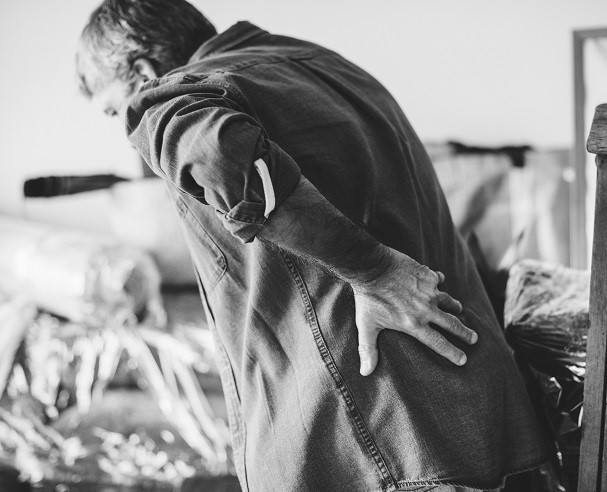KNOW SOMEONE WITH A BAD BACK? TOP TIPS FOR MAINTAINING MUSCULOSKELETAL HEALTH
MANUAL HANDLING
Everyone knows someone who has a bad back or an injury that stops them working. Often these are work-related. ‘Health’ issues are often unseen by others which has resulted in less priority than ‘safety’ in the past. Unfortunately, there are approximately 66,000 UK workers suffering from new or longstanding cases in the construction industry every year so the impact is far, far wider.
However, it is possible to help yourself and others keep healthier for the long term by reducing manual handling risks.

AWARENESS
Bad manual handling can result in accidents such as sheet materials falling when stored vertically, but a major impact is upon health.
These health issues can arise out of one heavy or awkward lift or from lighter lifts repeated many times.
Most workers will have attended a manual handling course but briefing out the likely risks and the planned approach to each job will help avoid the pitfalls: Short toolbox talks are probably the most effective method.
Making sure teams are aware of the risks and that they are using the available equipment to eliminate, avoid, reduce or manage these risks is very important.
COMMON ISSUES ON SITES
Heavy Items
On sites, frequently encountered heavy items are lintels, kerbstones, stone blocks, steel beams, plasterboard sheets, tiles, rolls of carpet, windows and furniture. Wherever possible, these items should be marked up with the weight and a warning. Even items such as boxes of floor tiles can cause problems because of the frequency of lifting from ground level. Loading Bay to Site, Route of Travel
Some sites are in shopping malls or sites remote from a loading bay. Planning the best route to and from the loading area and the use of any available equipment to reduce the manual handling load
